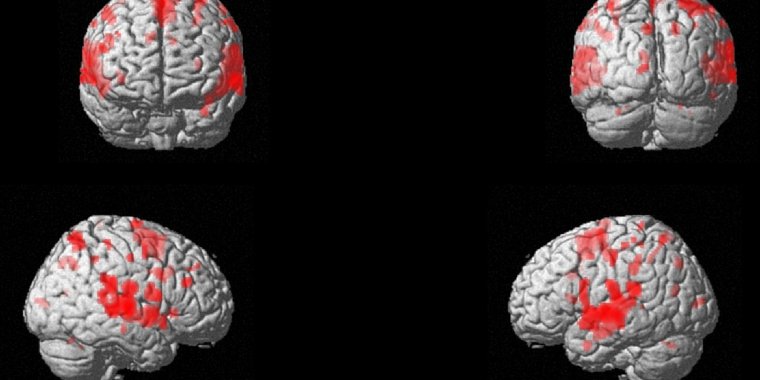| News / Science News |
How does the brain learn categorization for sounds? The same way it does for images
Categorization, or the recognition that individual objects share similarities and can be grouped together, is fundamental to how we make sense of the world. Previous research has revealed how the brain categorizes images. Now, researchers have discovered that the brain categorizes sounds in much the same way.

Functional MRI response from a representative subject during a listening task. Inage credit: Xiong Jiang/Georgetown University
Max Riesenhuber's group at Georgetown University had previously studied how the brain categorizes visual objects and found that at least two distinct regions of the brain were involved. One region, in the visual cortex, encoded images, while a region in the prefrontal cortex signaled their category membership.
To find out how the brain categorizes auditory input, the researchers invented new sounds using an acoustic blending tool to produce sounds from two types of monkey calls. The blending produced hundreds of new sounds that differed from the original calls.
Subjects listened to several hundred calls and categorized them under two arbitrary labels that were created by the researchers. The researchers used functional MRI prior to and following the training to image subjects' brains while they listened to the sounds, but did not yet label them.
The results showed that learning to categorize the sounds had increased the brain's sensitivity to the acoustic features that distinguished one sound from another. This occurred in the lower-level auditory cortex, which is responsible for representing sound but does not appear to give it any meaning or significance.
The subjects' brains were then scanned while they judged which category the sounds belonged to. These scans showed that neural activity patterns in another brain region, the prefrontal cortex, distinguished between categories and that subjects used that information to make their judgments.
The researchers also found that the category selectivity of neural activity patterns in the prefrontal cortex was task-dependent. When subjects were listening to the sounds but not judging which category they belonged to, the neural activity patterns in the prefrontal cortex region did not distinguish one category from another.
The discovery of similar processes for visual and auditory categorization promises important advances for how we understand learning. (National Science Foundation)
YOU MAY ALSO LIKE





